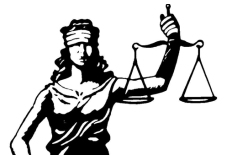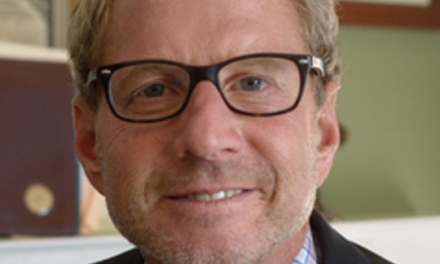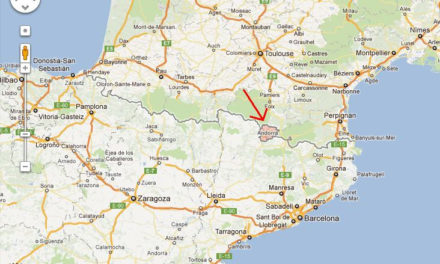An essay by Drs. Lester Grinspoon and James B. Bakalar, published in the Journal of Drug Issues in 1990, recently caught the eye of a tax-policy specialist named Pat Oglesby. He contacted Grinspoon in connection with an event he hopes to organize, “a conference on government revenue from legalized marijuana in the DC area, possibly this spring.”
Grinspoon replied,
“I am delighted that someone with your background is interested in that idea. It could even work now with just alcohol and marijuana (which will soon be legal in most states if not all). It would not only be a rational way to tax drugs that people use for “recreational” purposes, but it would be a very good way to teach people about the relative harmfulness of those two substances. Ultimately, I wish that it would apply to all drugs which are or were considered illicit, but in the meantime this would be a beginning.”
Here’s the essay in full. Bear in mind that it was published six years before California voters legalized marijuana for medical use.
|
ARGUMENTS FOR A HARMFULNESS TAX Lester Grinspoon and James B. Bakalar A “Harmfulness Tax” is proposed as an alternative to the present unsuccessful drug prohibition policy. Both legal and currently illegal drugs would be taxed in proportion to the social cost associated with their use. In a sense, drug users would be required to buy insurance against the harm their drug use might cause to society. The scheme would be implemented in stages beginning with alcohol, tobacco and marijuana. After the program had been established in this way, it would be extended to other drugs, including cocaine. This proposal accords well with experiences gained in taxing legal drugs and with the realities of current drug use in America. A fool, if he obeyed, may punish crimes as well as another; But the true statesman is he who knows how to prevent them. — Rousseau In the era of the Volstead Act, H.L. Mencken said of the alcohol problem that between the distillers and saloonkeepers on one side and the prohibitionists on the other, no intelligent person thought there was any solution at all. The same may be true of the illicit drug problem today, with its traffickers and users on one side and its moralists and police on the other. Only the problem is perhaps more serious because the acceptable range of solutions is so narrow. There is very little effective opposition to prohibition. The American War on Drugs began with the Harrison Narcotics Act in 1914 and has escalated in the last twenty years. Federal, state and local governments now spend an estimated eight to nine billion dollars a year on direct drug enforcement activities and millions more to house and feed drug dealers and users, who now constitute one-third of federal prisoners and contribute substantially to the need to build more prisons. It is sometimes said that the pendulum of public attitudes swings back and forth between harshness and leniency in drug control. If there were some swing toward leniency in the early 1970s, it now appears to be going the other way, as indicated by the Bush-Bennett plan for drug control, which calls for even more spending on law enforcement. Drugs enter the United States at a growing rate despite the war effort, although that effort does inflate prices and keep the drug dealers’ franchises lucrative. Another consequence is drug-related crime and violence, a product of the black market in drugs now as it was a product of the black market in alcohol in the 1920s. The threat to civil liberties grows as the warriors, already by necessity using entrapment and informers, now make plans to send in the army and periodically examine everyone’s urine. They are already randomly testing the urine of federal employees. Our society cannot be both drug-free and free. Any serious approach to this problem (as opposed to the present futile approach) demands a recognition of complexity and ambiguity. We have to reject the dream of a drug-free society. We may have to acknowledge that the use of drugs and alcohol has benefits, as well as dangers. The main obstacle to thinking about any serious alternative to present policies is that no one in government wants to give up the symbolism of the criminal law or the commitment that has been made over the last seventy years, not only in the United States but all over the world, to treating drugs as a criminal problem. But there is a great deal of public ambivalence, or, to put it less kindly, hypocrisy, where this issue is concerned. The moral consensus about the evil of drugs is often passionate, but sometimes shallow. We pretend that eliminating the drug traffic is like eliminating slavery or piracy, or sometimes asthough it were like eradicating smallpox or malaria. No one would suggest that we legalize piracy or give up the effort to eradicate infectious diseases. Yet conservative authorities like the economist Milton Friedman and the Economist of London have suggested legalization of drugs. Despite the hysterical rhetoric we often hear, drug control is not a settled issue in the same sense. Or rather, the need for that kind of rhetoric is a sign that it is not a settled issue. On the one hand, it is accepted in public discourse that everything possible has to be done to prevent everyone from ever using any of the controlled substances. On the other hand, there is an informal lore of drug use which is more tolerant. At one time it looked as though the forms of public discourse and this private language were coming closer together. Now they seem to be drifting apart again. A type of pretense that we have long abandoned in the case of alcohol is still considered the only respectable position where other drugs are concerned. Ambivalence (to put it kindly) or hypocrisy (to put it unkindly) has always been an undercurrent in public attitudes toward drugs, even while the criminal control system becomes more and more entrenched. That undercurrent is what leaves room for the possibility of change. We would like to suggest a proposal for non-criminal approach to recreational drugs. Let currently controlled substances be legalized and taxed. The taxes would be used for drug education and for paying the medical and social costs of drug abuse. A commission would be established to determine these costs separately for each drug, and the rate of taxation would be adjusted periodically to reflect the information gathered by the commission. Thus, the government would acknowledge the impossibility of eliminating all drug use and use its taxing power and educational authority to encourage safer drug use. The drugs that are now legal, alcohol and tobacco, would not be distinguished from the others. To illustrate the kind of calculation involved, it was recently estimated that direct health care costs plus indirect losses in productivity and earnings due to cigarettes amount to sixty-five billion dollars a year, or about two dollars a pack. (The exact figures depend on how costs are defined; for example, the economic loss from smoking may be “balanced,” in a perverse way, by the lowered cost of caring for chronic disabling diseases of old age in a society where many die young of smoking-related illness.) Such a taxation policy might be regarded as a way of making people buy insurance for the risks to themselves and others in their use of drugs. Life insurance companies already offer substantial discounts in their premiums for nonsmokers, and this insurance preference is slowly being extended to fire and other insurance policies. The program might be instituted in phases, so that we could adjust and learn more before committing ourselves fully. Phase one might involve alcohol, tobacco and cannabis: alcohol and tobacco because they are already legal; cannabis because it is probably the least dangerous drug used for pleasure. They could all be sold through specially licensed outlets at prices determined by the commission. Advertising would be banned. Present prices might be maintained at the start. Then, as the commission collected more information, pricing could change to reflect social costs. If this system works as hoped, data would eventually indicate that these drugs are causing less and less harm. At that point we could consider bringing other drugs into the system. The advantage is that we would no longer have the expense, corruption, chaos and terror of the war between drug traffickers and narcotics agents. In this war a self-reinforcing cycle is developing, as drug enforcement operations begin to pay for themselves by funds confiscated from the drug traffickers whose operations they make enormously profitable. The taxing system suggested here would establish a different kind of revenue cycle, in which society would pay for the costs of drug abuse by extracting them from the drug users in proportion to the amount they contribute to the problem. The commission that supervised this taxing system would also serve as an educator and guide to society — an educator not constrained by the present totally unrealistic assumption, built into the criminal law, that any use of certain drugs must be evil or dangerous, while other drugs have a range of benign and harmful uses. Honest drug education would become possible. Is it plausible to think that this arrangement would work? Would it be possible to tax drugs enough to pay for their costs? Even if it were possible, would drug abuse increase so much that we would be paying too high a price in personal and social misery? Is the elasticity of demand great enough so that taxing would substantially influence the amount of drugs consumed, especially by heavy users? Evidence on all this is very uncertain, even in the cases of alcohol and tobacco, where most research has been done. There is a large literature on the distribution curve of alcohol consumption among individuals in society, most of which concludes that any policy designed to cut total consumption will at least proportionately reduce alcohol use among problem drinkers, and therefore, the medical and social costs of alcohol abuse. That is, the demand is elastic enough, even among alcohol users who create problems by their use, to be affected by a rise in price. In fact there is some evidence that in countries where the price of alcohol is relatively higher there are fewer alcohol problems, and the same is true for states within the United States. There is also some evidence of elasticity of demand for heroin addicts. Several studies suggest that addicts adjust the size of their habits to the price of heroin. One authority on heroin control has said that the criminal law would be effective in cutting down heroin use if it raised the time needed to get a dose of heroin from five minutes to two hours. This is the “crime tariff.” The criminal law makes it risky to manufacture and distribute the drug. This raises its cost to the consumer, who therefore needs more time to earn or steal enough money to obtain it, and restricts accessibility, so that the consumer has to spend more time finding out where to get it. The question is whether through taxation we could impose a limitation similar to the crime tariff but more efficiently and with fewer monstrous side effects. Inelasticity of demand is greatest in the case of tobacco, because nicotine is one of the most highly addicting substances. Nevertheless, it is clear that even here raising the price by taxes has considerable effect on consumption. Research suggests that for every ten percent increase in cigarette prices consumption will decrease about four percent. Some studies suggest that the price affects mainly the decision to start smoking regularly rather than the quantity smoked by an already addicted smoker. Thus, the short-run impact of extra taxation would be small, and it would reduce cigarette smoking only in the long run. Other studies find that as the average cost of tobacco is raised the income elasticity of demand increases; that is, poorer people are more deterred from cigarette consumption than richer ones. A problem raised by any system of authorized sales is the black market. The tax would have to be set low enough so that a black market would not be profitable. It is possible to do this and still reduce demand for the drug considerably, as the case of alcohol seems to show. On the other hand, it is not clear whether any tax low enough to prevent a substantial black market would be high enough to pay for the social and medical costs of the drug use. Certainly present taxes on alcohol are far from doing that. It might prove impossible to create a system that would make the abusers of a drug, or even its users, pay for the full costs of abuse. Maybe this problem is practically insoluble. Certainly the criminal law approach offers no solution for it. We simply don’t know the amount of drug use and the seriousness of drug problems that would exist under this kind of system — whether a legal taxation system would have the same effect as the current crime tariff. One way to study the issue might be to examine the effect on gambling habits of the institution of state lotteries in competition with illegal numbers games. In any case, to undertake such a bold move we would have to decide that the deprivation of freedom and the damage wrought by prohibition is greater than the damage attendant on an increment of drug use, much as we did when we decided to repeal the Volstead Act. There are already some models available for legalization or quasi-legalization. In Amsterdam there is a union or organization of drug users and addicts that advises officials. Heroin addicts get free methadone and marijuana is sold at openly tolerated cannabis cafes. Alaska allows its citizens to grow marijuana for household use, and several other states have reduced the penalties for marijuana possession to fines similar to traffic tickets. In one of these states, Maine, a three-hundred-thousand-dollar-a-year outlay on law enforcement was converted to a twenty thousand dollar gain for the state treasury with no increase in marijuana use. Many might agree that the harmfulness tax approach would work if it were limited to alcohol, tobacco and cannabis. What about cocaine? Well, consider the present alternatives. The Bush-Bennett plan, perhaps because its authors realize that demand reduction, particularly in the inner city, will be difficult to achieve, aims at eliminating the production of cocaine. But the so-called Andean strategy of interrupting South American supplies is bound to fail for simple reasons of botany. The assumption seems to be that coca grows only in Peru, Bolivia and Colombia. In reality, the coca bush will grow in any place where certain conditions are met: an altitude of 1,500 to 6,000 feet; continuous high humidity; a uniform average temperature of sixty-five degrees throughout the year; and soil free of limestone. Coca thrives on land that is too poor for other crops. In the past it has been grown commercially in Jamaica, Madagascar, India, Ceylon, and especially Java. Even if, implausibly, the coca bush could be destroyed in the Andes, it would soon be blooming again elsewhere, just as the cultivation of opium poppies increased in Iran and Afghanistan when it was curtailed in the Far East. Let’s hope we don’t have to see American soldiers coming home in body bags before we realize that the Andean strategy will never eliminate the supply of drugs. It is worth noting the absurdity of our national self-righteousness with respect to Colombian cocaine entrepreneurs. The United States manufactures six hundred billion cigarettes a year and sends one hundred billion overseas. The five hundred billion cigarettes consumed yearly at home cause 400 thousand deaths; by extrapolation, our export trade causes eighty thousand deaths abroad — far more than the number of deaths cocaine produces in this country. Furthermore, the Colombian government at least offers no official encouragement to the cocaine traffic; our government subsidizes tobacco cultivation and cigarette exports with the enthusiastic support of some of the fiercest congressional anti-drug warriors. Our government has no right to be morally indignant. What about cocaine demand? The barrage of drug-war publicity has obscured the fact that the number of people using cocaine is declining. The reason is that the middle class is giving up the drug, just as it continues to give up the even more addictive nicotine. When people who are not otherwise desperate become aware of the dangers of drugs, they begin to avoid them. The cocaine problem is not improving, because it is largely a problem of the inner cities. Conditions there are worse now than they were twenty years ago. Increasingly, cocaine users are people who feel hopeless, trapped and alienated, who are able to find only miserable jobs at low pay or no job at all. When these people are exposed to crack cocaine, they have three choices: they can ignore it; they can seek respite by using the drug for a twenty-minute holiday during which they feel good about themselves and hopeful about their situation (it is an illusion, but they have nothing better); and they can decide to sell crack in hope of getting rich and buying the luxury products with which our consumer society tantalizes them. This, at least, is not always an illusion; crack provides a genuine entrepreneurial opportunity for a few. The social, psychological and economic pressures moving young people in the inner city toward the last two options are enormous. Crack is powerfully attractive to demoralized people in a desperate social situation. Admittedly, the harmfulness tax is not an answer to this problem. But the answer is even less likely to be found in criminal law enforcement, which Bush and Bennett practically equate with prevention. No policy aimed directly at drugs and drug users can deal with the social issues that are the true heart of what is loosely, inadequately and propagandistically labeled the “drug problem.” Lester Grinspoon, M.D., and James B. Bakalar, J.D., are faculty members of the Department of Psychiatry at the Harvard Medical School, 74 Fenwood Road, Boston, Massachusetts 02115. ® Journal of Drug Issues, Inc. 0022-0426/90/04/599-604 |





